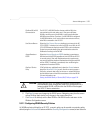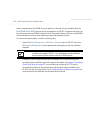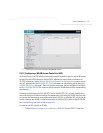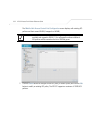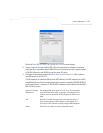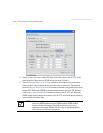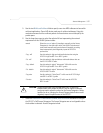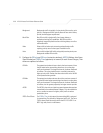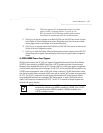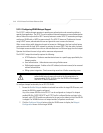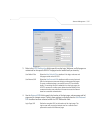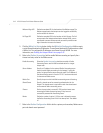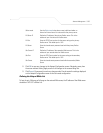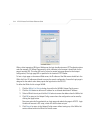
Network Management
5-37
5. Use the two Multicast Address fields to specify one or two MAC addresses to be used for
multicast applications. Some VoIP devices make use of multicast addresses. Using this
mechanism ensures that the multicast packets for these devices are not delayed by the
packet queue.
6. Use the drop-down menu to select the radio traffic best representing the network
requirements of this WLAN. Options include:
7. Select the Enable Wi-Fi Multimedia (WMM) QoS Extensions checkbox to configure
the AP-5131’s QoS Access Categories. The Access Categories are not configurable unless
the checkbox is selected. Access Categories include:
manual Select the manual option if intending to manually set the Access
Categories for the radio traffic within this WLAN. Only advanced
users should manually configure the Access Categories, as setting
them inappropriately could negatively impact the AP-5131’s
performance.
11ag - wifi Use this setting for high-end multimedia devices that using the
AP-5131’s high rate 802.11a or 802.11g radio.
11b - wifi Use this setting for high-end devices multimedia devices that use
the AP-5131’s 802.11b radio.
11ag - default Use this setting for typical “data-centric” MU traffic over the
AP-5131’s high rate 802.11a or 802.11g radio.
11b - default Use this setting for typical “data-centric” MU traffic over the
AP-5131’s 802.11b radio.
11ag voice Use this setting for “Voice-Over-IP” traffic over the AP-5131’s high
rate 802.11a or 802.11g radio.
11b voice Use this setting for “Voice-Over-IP” traffic over the AP-5131’s
802.11b radio.
CAUTION Symbol recommends using the drop-down menu to define the
intended radio traffic within the WLAN. Once an option is selected,
you do not need to adjust the values for the Access Categories. Unless
qualified to do so, changing the Access Category default values could
negatively impact the performance of the AP-5131.
!



